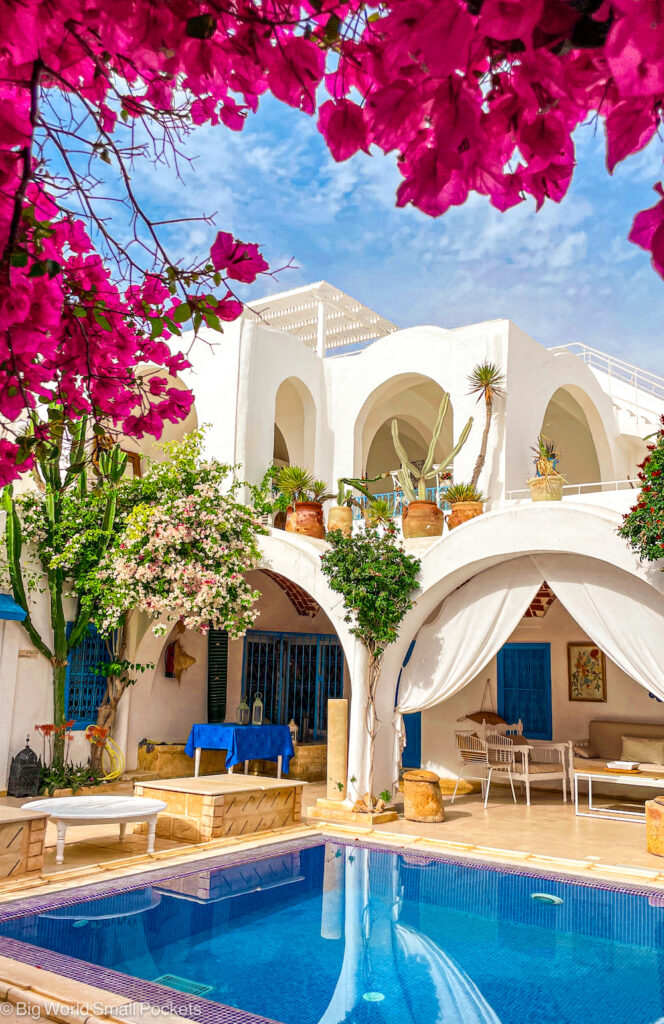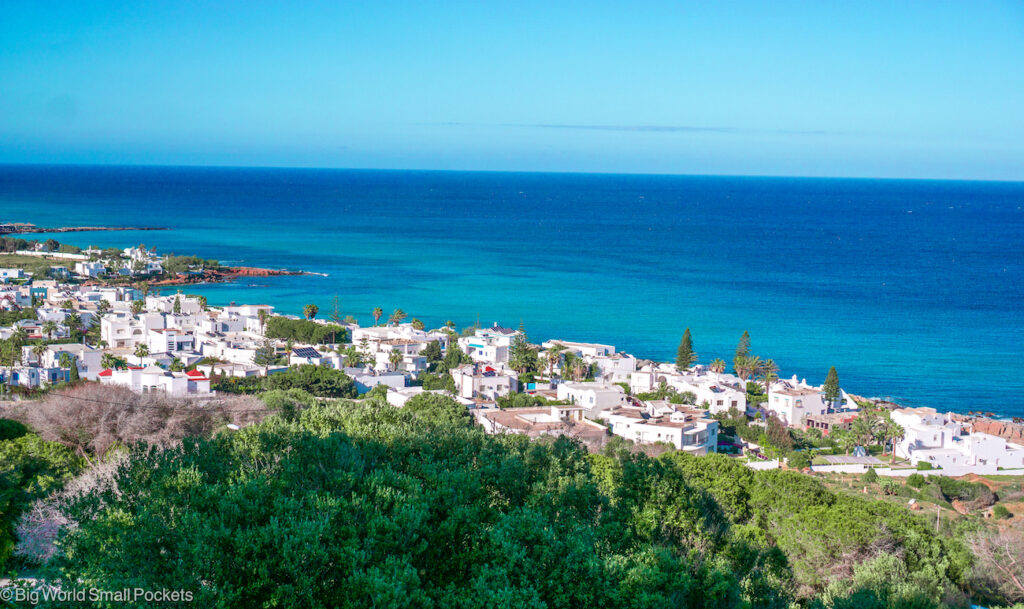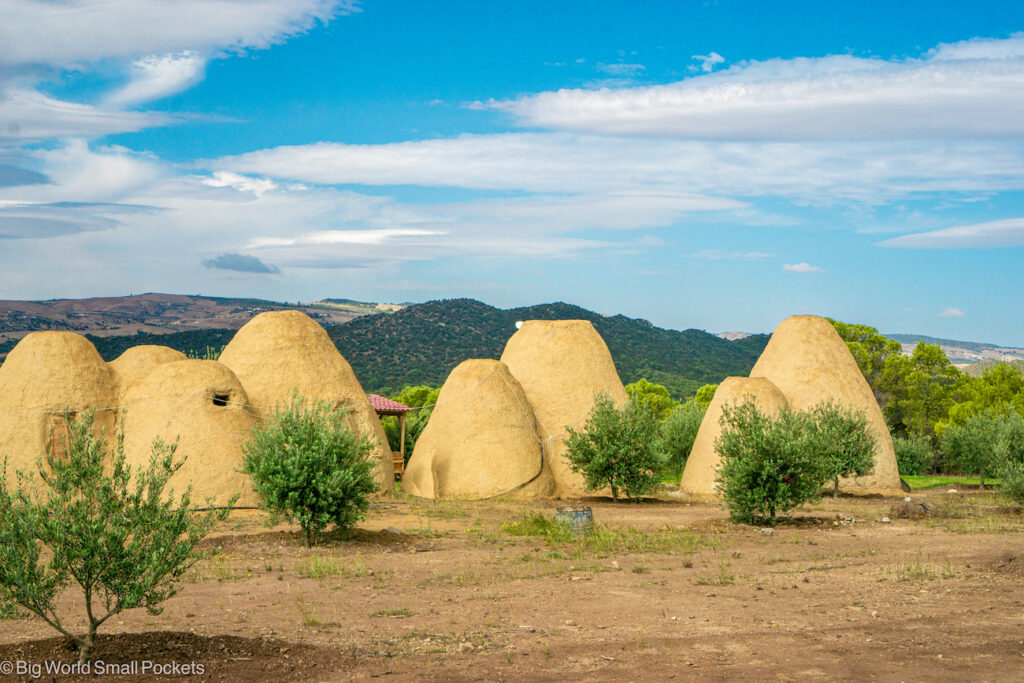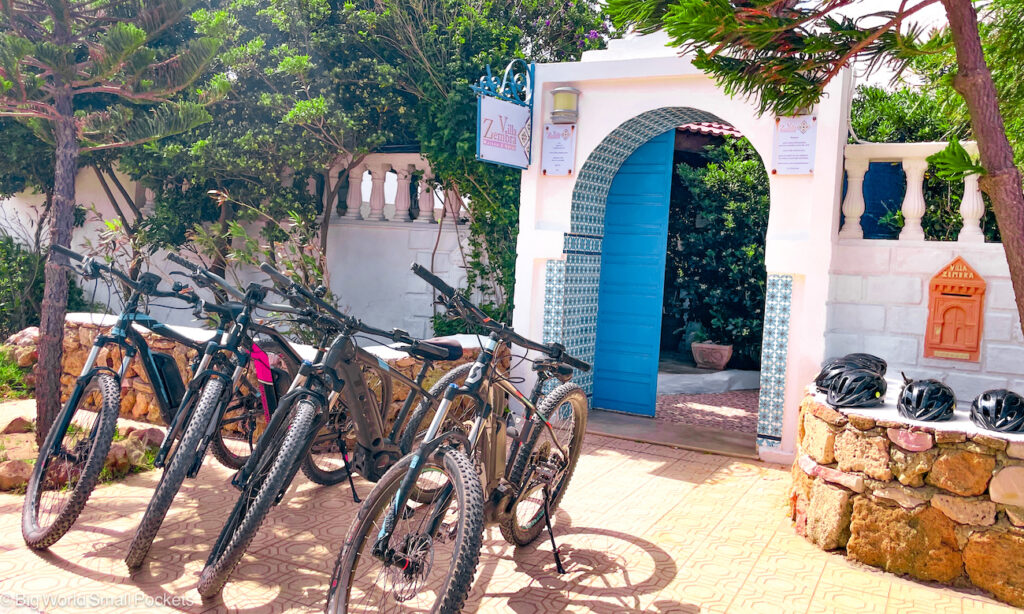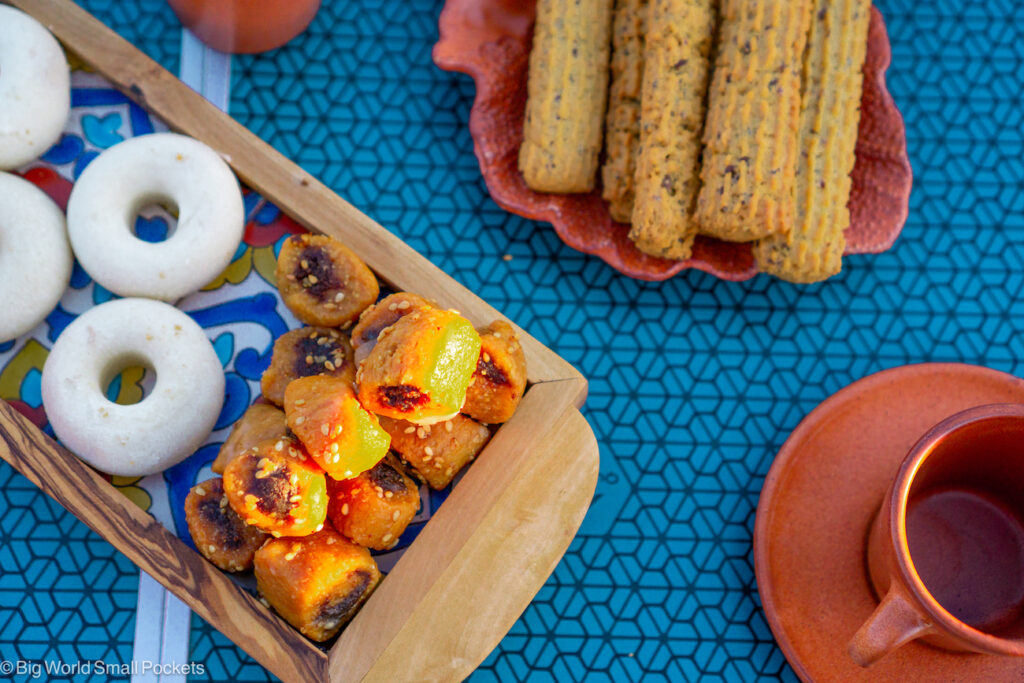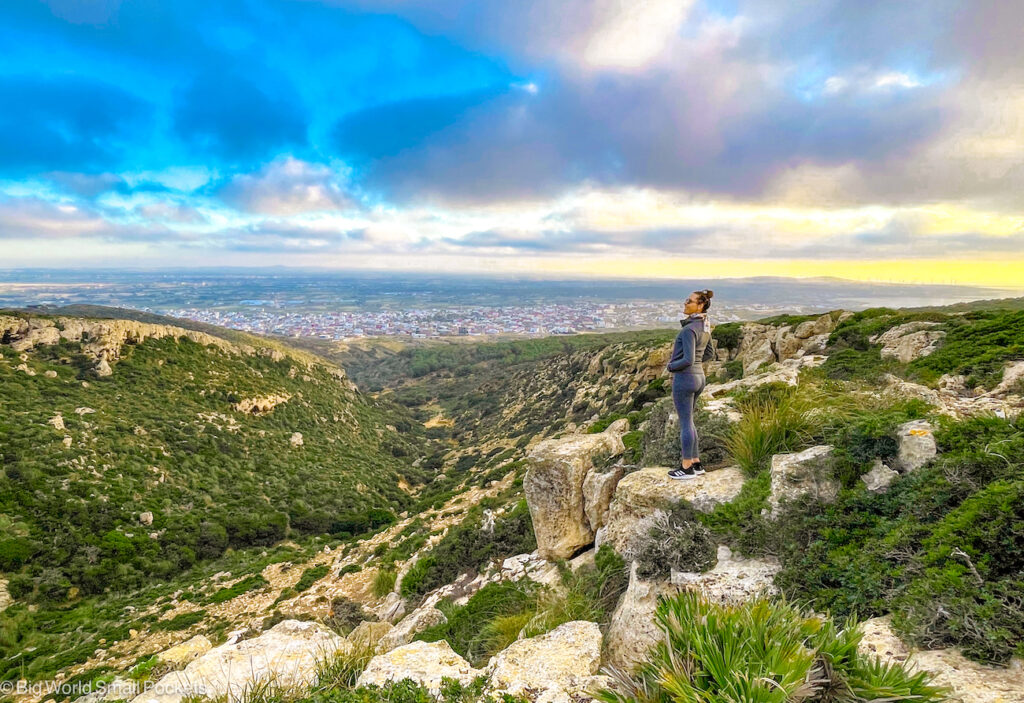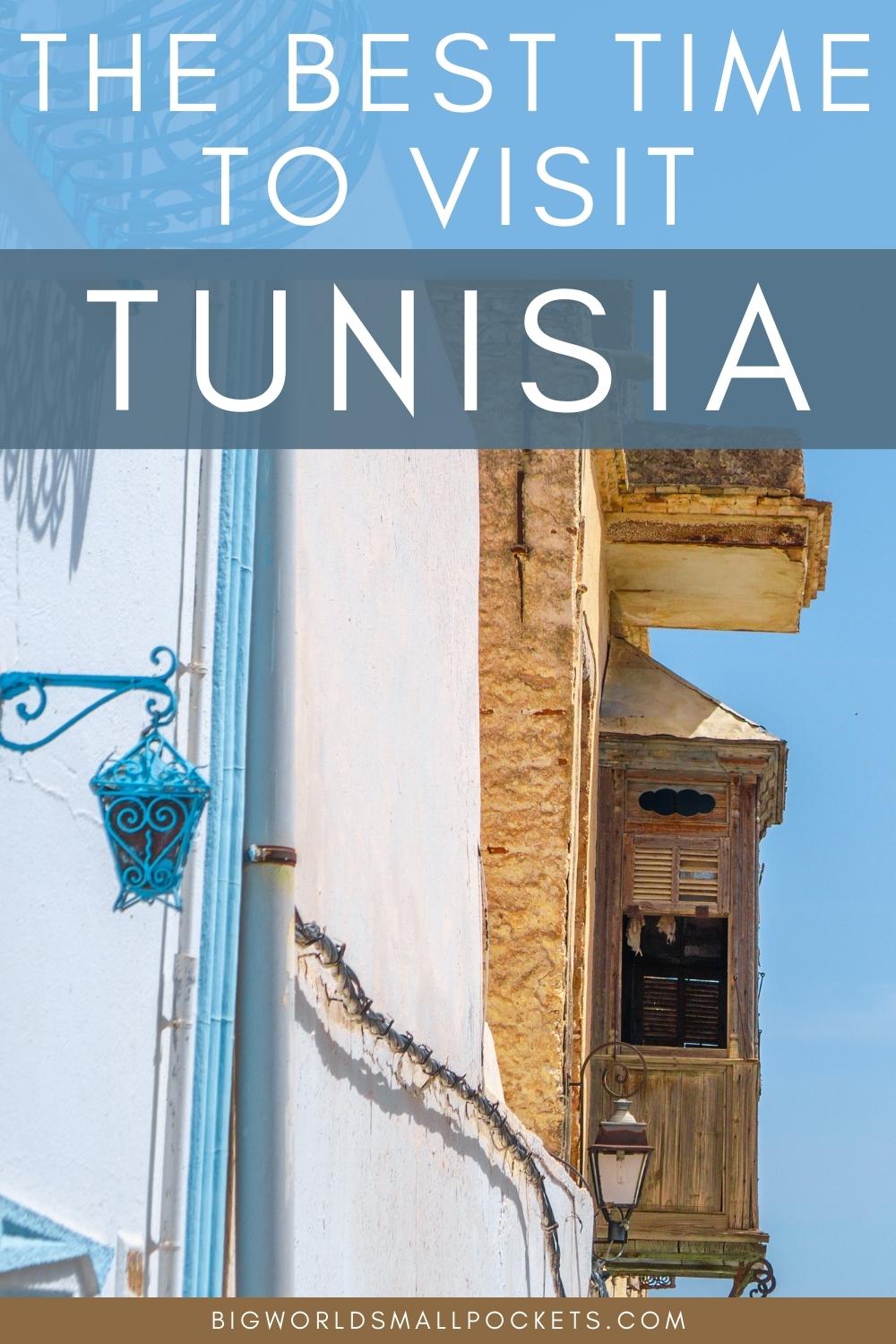It’s quite simple, choosing the best time to visit Tunisia is absolutely key in making sure you have the best trip possible here!
Located in north Africa, Tunisia is a diverse country and from the mountains in the north, to the beaches of the east and the deserts of the south, the climate varies wildly across all these varied geographical landscapes, as well as across the 12 months of the year.
So read on to discover when the best time to visit Tunisia is depending on exactly when you want to travel there and how you want to spend your time when you do…
Related Posts
- Perfect 10 Day Tunisia Itinerary
- Sidi Bou Said, Tunisia: Complete Travel Guide
- Egypt vs Tunisia: Which is Better for Travel?
My trip to Tunisia was sponsored by the Authentic Tunisia campaign but, as always, all views are my own.
This page contains affiliate links meaning Big World Small Pockets may receive a small commission on any purchases at no extra cost to you.
Overall Best Time to Visit Tunisia
Overall, the best time to visit Tunisia is during the country’s spring or autumn seasons.
This includes the months of April, May and June, plus September.
If you plan to visit several different parts of Tunisia – think the northern mountains, the eastern coast and the southern desert areas – these months provide the best all round balance of blue sky days and good temperatures.
Giving the optimal balance for sightseeing and sunbathing, visiting during these months will help ensure you aren’t sweltering in some seriously scorching heat and, equally, that your chances of getting a lot of rainy and cloudy days are minimal.
These are also the best months to visit Tunisia if you’re simply seeking some sun and forgetting the sightseeing.
You might be tempted to hit up this country during the hottest, summer months of the year if you want to catch some rays, but be warned, things getting seriously hot and uncomfortable at this time of year, so it may in fact be too hot to go out much by the pool or on the beach at all!
Sticking to the spring and autumn months (especially May, June and September) is therefore definitely the best option for those who simply want to sunbathe – the sea is also a lovely temperature at these times of year, especially in September when it’s had the whole summer to heat up!
Tunisia Climate
At this point, it’s probably worth taking a minute to talk about Tunisia’s climate to help you better understand when best to travel here.
Situated in north Africa, Tunisia lies on the edge of the southern Mediterranean sea.
Its capital is just over 350km from Italy’s southern island of Sicily and therefore, despite being in the African continent, Tunisia’s weather patterns most closely resemble those of southern Europe i.e. mild springs and autumns along with scorching hot summers.
At least in the north and the east of the country this is the case!
The south of Tunisia takes in large swathes of the Sahara and the climate is pretty different in these sandy southern parts.
Here in the desert, you can expect minimal rainfall and warm daytime temperatures most of the year.
That said, as is common with desert climates, temperatures can drop drastically during the night.
This is especially true during Tunisia’s winter season, which stretches from December to February, when temperatures in the southern desert regions plummet.
Sandstorms in the desert are also most common at this time of year.
Tunisia’s Hottest, Coldest and Wettest Months
Across the country, the hottest months of the year in Tunisia are July and August, when daytime temperatures regularly exceed 30 degrees celsuis.
Known as the summer season, July and August also boast the lowest rainfall when, very often, there’s just 1mm of precipitation on average across Tunisia.
Conversely, January is the coldest month of the year here, when winter descends and temperatures struggle around 10 degrees celsuis.
While you may also expect winter to be the wettest time in Tunisia as well as the coldest, it’s actually October and November that see the highest rainfall in this country – up to 30mm – so don’t forget to factor this in, particularly if you’re considering a half term break!
When to Visit Tunisia by Month
January
As discussed this is the coldest month across Tunisia.
The only region boasting mild temperatures at this time is the desert, but even here nights can be seriously cold and sandstorms a real risk – pack accordingly.
February
Temperatures warm slightly, but this is still winter in Tunisia, so short days and cold evenings are to be expected!
March
Spring is arriving, but sea temperatures remain chilly!
Wildflowers begin to bloom in the north, but days can still be fresh, wet and cloudy in the north.
The desert is mild and there’s few crowds around – making it a good time to enjoy those Star Wars sites without the crowds!
April
The first month I recommend as the best to visit Tunisia, temperatures are now creeping above 25 degrees at the coast.
Rainfall can still be high, but Tunisia can be a great place to grab some Easter holiday warmth as the days draw out.
Just remember to check when the holy month of Ramadan (and the celebration that marks it end – Eid al-Fitr ) falls. As a majority Muslim country, many Tunisians observe Ramadan and celebrate Eid, which means opening hours and transport connections can be limited during this time.
May
A great month to visit Tunisia and the one I enjoyed here, especially as the days are long and light!
May can still bring some cloudy and potentially wet days in the mountains, but the coast is warm and sunny, and sea temperatures are good.
Sightseeing is also perfect with comfortable, blue skies days and the desert is still not too hot to be enjoyable.
June
Another fantastic month for visiting Tunisia, especially if you’re seeking some sun, as the mercury climbs to the high 20s.
The desert is still just about pleasant for visiting still and, in the north, it’s still totally possible to enjoy outdoor active pursuits and sightseeing days in reasonable comfort – just pack your sunscreen and a sun hat!
July
One of the hottest months in the country – the desert is almost unbearably warm at this time and even on the coast it’s really too hot to sunbathe with temperatures above 30 degrees celsius most days.
Rainfall is low, but walking around ancient towns and ruins may be pretty tough going – drink lots of water if you’re attempting it and stay out of the midday sun.
August
Like July – super hot and dry everywhere.
Steer clear of the south and the desert!
September
Another top month for visiting Tunisia; the temperatures are still good (high 20 degrees celsius), the days still long and the sea wonderfully warm.
Local summer crowds have dissipated at the main holidays spots, meaning you can pick up some great deals at the coast.
Sightseeing and active adventures are totally possible during this month and the desert has cooled slightly!
October
Rainfall spikes hugely during this month, which is why I don’t recommend visiting Tunisia at this time even if the temperatures are still warm.
Unless you’re going to the desert that is, in which case, this is a great month to do so!
It’s also harvest season for dates and olives in the south of the country – another good reason to visit this part of Tunisia at this time!
November
Day light hours are rapidly reducing and rainfall remains high.
Temperatures also drop, so only really a good month for those desert trips!
December
A cool month, with temperatures hanging around in the mid-teens.
Tunisia doesn’t get the Christmas crowds (it’s a Muslim majority country for 1!) and the rains have reduced
If you want to escape the festive season for somewhere slightly warmer therefore, Tunisia is calling you!
And there you have it, my guide to the best time to visit Tunisia.
Have anymore questions about when, where and how to travel this country?
Don’t hesitate to get in touch using the comments box below…
Just enter your email address below and I'll send it to you for FREE!
Information will be sent to the email provided above
Top Travel Tips for Tunisia
How to Get to Tunisia?
Flights to the country’s main international airport, Tunis-Carthage, arrive from cities across Europe and beyond.
As always, I use Skyscanner to find the best flight deals.
The airport is just a short drive from the capital Tunis and the glorious town of Sidi Bou Said, making it the perfect arrival and departure point for north Tunisia itineraries.
How to Get Around?
Trains, domestic flights and buses all allow you get around Tunisia.
However, as I recommend you visit some off the beaten track spots, hiring a car is really the best way to travel the county.
Check out these great Tunisia rental car deals.
Top Tunisia Tours
Alternatively, if you’d rather not travel Tunisia independently, these top Tunisia tours are another great way to experience an adventure here.
5 Key Packing Items
Located in North Africa, Tunisia is a diverse country boasting coast, mountains, deserts and ancient cities.
Make sure you’re prepared with these top 5 packing items…
Water To Go bottle Windproof Jacket Versatile Trainers Lightweight Day Pack Mirrorless CameraLearn what else you should take in this complete Tunisia packing list,
Travel Insurance for Tunisia
World Nomads offers simple and flexible travel insurance. Buy at home or while travelling and claim online from anywhere in the world.
Alternatively, if you’re a long-term traveller, digital nomad or frequent remote worker seeking travel health cover, check out Safetywing’s Nomad Insurance policies.
Travel Money in Tunisia
The easy way to spend abroad with real exchange rates, no markups and no sneaky transaction fees, you can use your Wise card just like a debit card in Tunisia… and it links easily with Google and Apple pay. Get yours here.
PIN IT TO PINTEREST!


